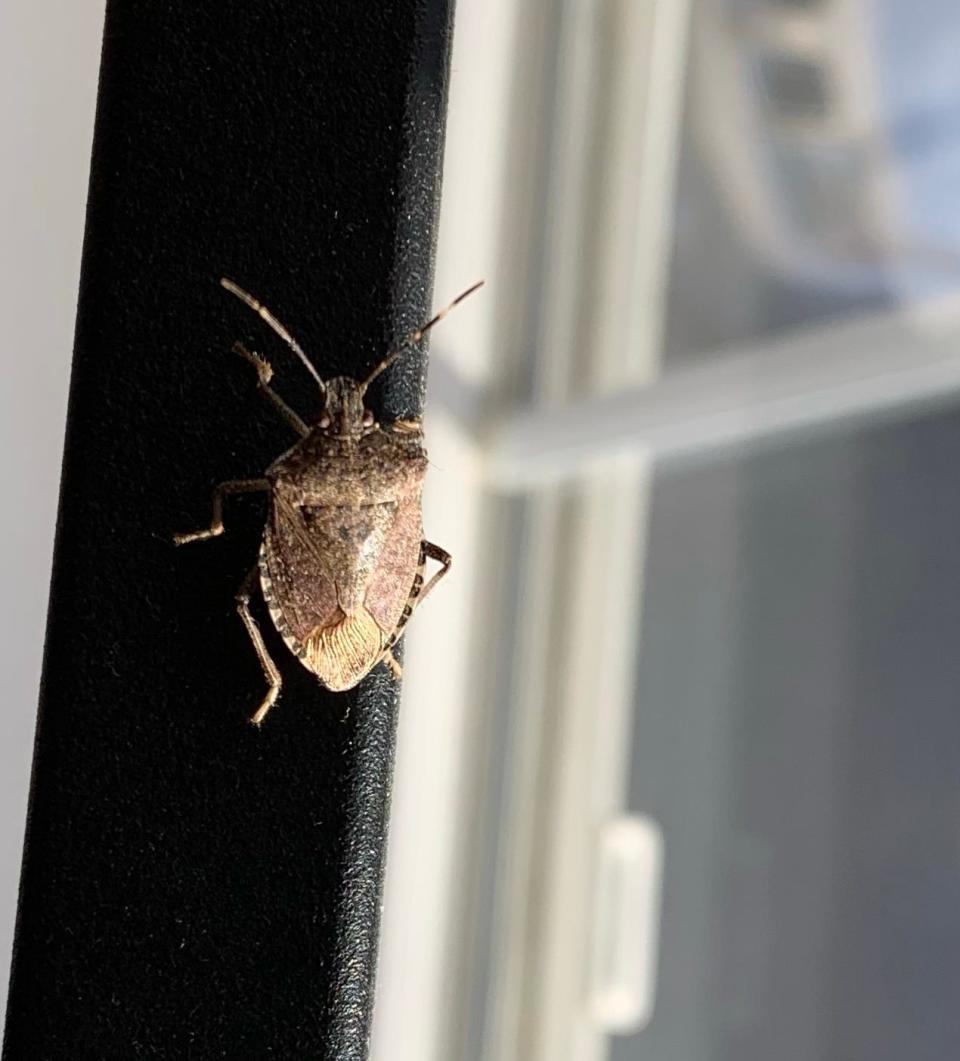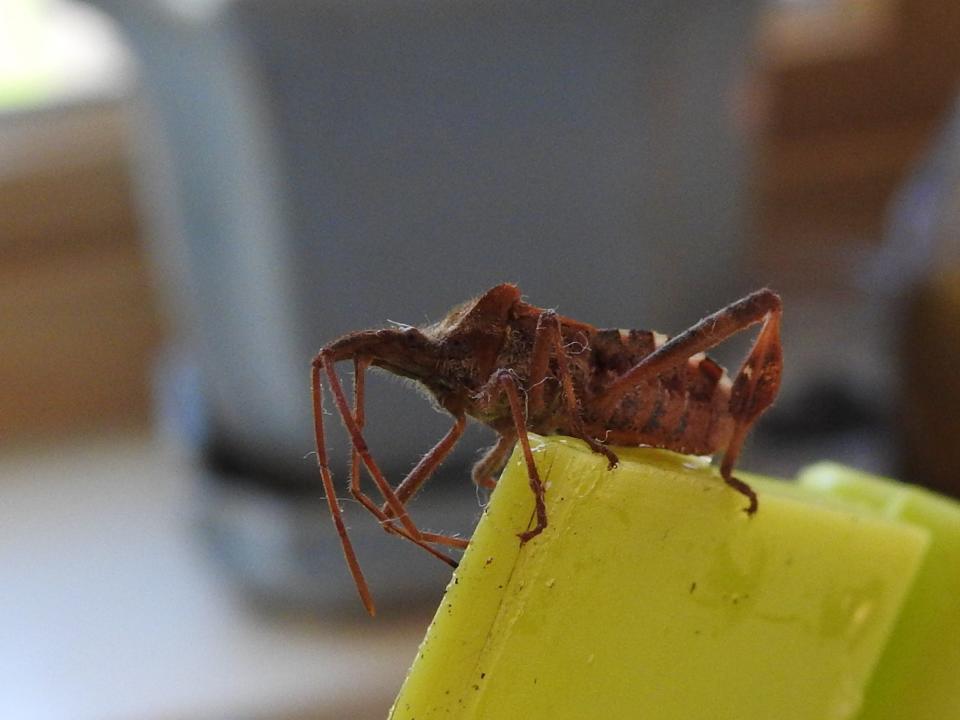Unwelcome visitors: Stink bugs a smelly nuisance, but harmless in homes
I’ve heard some reports that stink bugs are particularly bad inside houses in the Seacoast area this year. I, personally, have not had many in my house. I think I’ve found a handful over the past few months or so. In the scheme of things, this isn’t too bad.

A study from back in 2016 (PeerJ “Arthropods of the great indoors: Characterizing diversity inside urban and suburban homes” by Matthew A. Bertone et al.) found that most houses contain between 24 to 128 arthropod families. Arthropods are bugs, anything with a hard exoskeleton and jointed appendages. This translates into hundreds of bugs in our houses at any given time. Most live unnoticed in the shadows, but sometimes our tiny housemates make a bolder statement and saunter across our windowsills, couches and beds.
A common visitor is the Asian ladybug. These are the ladybugs that gather in huge numbers on windows on warm, sunny days. That’s why they are inside. They are seeking warmth. These can be annoying, but most people aren’t horrified by them - probably because they’re cute and don’t bite. People respond differently to stink bugs. They don’t fit our definition of cute and they have a somewhat menacing air. They look like they could bite. And even worse, they stink (how unseemly) when disturbed or squished.
A friend recently sent me a photo of one of the many stink bugs to grace her house. At the same time, I found one in my kitchen and compared it to her picture. These were different bugs! My friend's was the invasive brown marmorated stink bug, mine was the invasive western conifer seed bug. These are probably the most common large bugs you’ll find in your houses this time of year (besides ladybugs). But don’t worry, both of these bugs are harmless to humans. They don’t bite, sting or transmit disease.
Brown marmorated stink bugs are the more problematic of the two. They are a serious pest of many fruit and fruiting vegetable crops. They overwinter as adults and are attracted to warm places and to lights in the fall and so end up in many houses. One way to help exclude them from your house is to seal any possible entry-ways and to minimize lights around doorways.
Once inside, you can vacuum them up (make sure to empty the bag outside or they’ll probably crawl back out) or just pick them up with a tissue and flush them. They are fairly easy to identify if you know what to look for. They have the classic stink bug shape: short and squat, shield-shaped, about 5/8 inch long, and marbled brown. Tell-tale characteristics are the two white bands on their antennae and the banding on the outer edge of their abdomen. As the weather warms, they start getting ready to move back outside (if they can get there), so if you have them you should be seeing them milling about, roused from their winter torpor.

Western conifer seed bugs are frequently mistaken for brown marmorated stink bugs, they look vaguely similar and have a very distinctive smell when crushed - sometimes the smell is described as similar to turpentine. You can tell them apart by looking more carefully at body shape. They are lankier than the stink bugs. They also have a flattened, leaf-shaped part to their back legs that is pretty obvious (if you’re looking closely). True to their name, western conifer seed bugs have piercing-sucking mouthparts (like all true bugs) which, according to Michigan State University Extension’s Gretchen Voyle (2012), “they use to feed on the gooey goodness inside of conifer seeds. The trees still produce cones, but there may be no viable seeds.” Despite this, they are not considered a significant environmental pest in this area.
It is very difficult to keep western conifer seed bugs out of your house. They can flatten their body and squeeze through almost any opening. Like the stink bugs, they are inside because they were attracted by the warmth and lights last fall.
Now that I know what they are and that they are relatively benign, I don’t find the loud buzzing sound they make when flying as scary as I used to. I’m also more apt to let them go outside in the spring rather than killing them as I do the stink bugs. Learning about these two potential housemates was, for me, one more lesson about the benefits of getting to know my wild neighbors.

Susan Pike, a researcher and an environmental sciences and biology teacher at Dover High School, welcomes your ideas for future column topics. She is looking for readers to send her the signs of spring they're noticing so she can document them on her website pikes-hikes.com. Send your photos and observations to spike3116@gmail.com. Read more of her Nature News columns online at Seacoastonline.com and pikes-hikes.com, and follow her on Instagram @pikeshikes.
This article originally appeared on Portsmouth Herald: Stink bugs in Seacoast NH homes are a nuisance, but harmless

